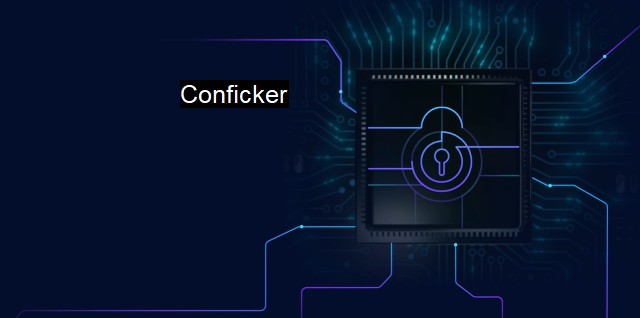What is Conficker?
Unraveling the Sophisticated Conficker Worm: An Exploration into Its Evolution, Infiltration Techniques, and Global Cybersecurity Impacts
Conficker, also known as Downadup or Kido, is a computer worm targeting Microsoft's Windows Operating System. Tens of millions of government, business, and home computers in over 190 countries worldwide were affected upon its first discovery in November 2008. Difficult to counteract and wildly persistent, Conficker endures as a substantial threat to cybersecurity. Therefore, awareness regarding its operation, impact, and possible prevention measures remains pivotal in the realm of information technology.Conficker is unique due to numerous innovative attributes, including: sophisitcated propagation methods, defence against antivirus programs, and self-updating ability. The worm initially disseminates via security vulnerabilities in Windows OS, most notably, the MS08-067 vulnerability which allows remote execution of code if file sharing is enabled. Once on a system, Conficker disables important security services, blocks access to antivirus websites, and opens a backdoor to accept instructions from a remote server.
Specifically, Conficker performs several actions compromising the security and integrity of the infected computer system. It disables Windows Automatic Updates, Windows Security Center, Windows Defender, and Error Reporting Service. it deletes system Restore Points, prevents the execution of security-related software, changes file permissions, and displays messages with false-positive detections. Some versions also download a rouge antivirus software "Spyware Protect 2009".
Conficker displays a unique resilience by utilizing a multi-layered design facilitating rapid spread with prevention and removal difficulty. It employs a complex mechanism that generates 500 unique domain names daily, drawing upon these to obtain designing updates and thus, circumventing server segregation attempts. By combining dictionary attacks with exponential growth model, Conficker targets weak security protocols, particularly user accounts with weak passwords, and employs its ability to copy itself to removable drives.
Infected machines can be manipulated to generate botnets, networks of infected computers used by hackers for coordinated cyberattacks. Such a comprehensive mechanism makes Conficker one of the most dangerous threats to global cybersecurity.
The widespread prevalence of Conficker prompted concerted efforts from cybersecurity companies. Microsoft, specifically, placed a bounty of $250,000 for information leading to the worm's creator, reflecting the seriousness of its impact. Unfortunately, despite best efforts, Conficker still exists, partly due to the lingering presence of unpatched systems, and continues to be a powerful reminder of the importance of effective cybersecurity measures.
Preventing infection by Conficker involves protective measures built around robust cybersecurity frameworks. MS08-067 patching represents the first critical step, coupled with the disabling of AutoRun function for external media. Ensuring the use of strong and complex passwords for user accounts also helps limit the worm's propagation. Regularly updating the Operating System and antivirus software further mitigates risk, providing much-needed protection against new security vulnerabilities which malware, like Conficker, exploits.
The era of Conficker cemented its place in the annals of major cybersecurity threats and brought valuable insights. Lessons learned highlighted the importance of maintaining up-to-date software, strong password protocols, and awareness of cyber threats. The episode serves as a stark reminder that disregarding cybersecurity norms is directly proportional to heightening risks involved with data sensitivity, personal privacy, and organizational credibility.

Conficker FAQs
What is Conficker?
Conficker, also known as Downup, Downadup and Kido, is a computer worm that targets the Microsoft Windows operating system. It was first detected in November 2008 and quickly spread to infect millions of computers worldwide.How does Conficker spread?
Conficker spreads through network shares and removable drives, such as USB flash drives. It also exploits a vulnerability in the Windows Server service that allows remote code execution.What are the risks of a Conficker infection?
A Conficker infection can allow a remote attacker to gain control of an infected computer, steal sensitive information, and propagate the infection to other machines on the same network. It can also disable security software and prevent Windows updates from installing, leaving the computer vulnerable to other malware infections.How can I protect my computer from Conficker?
You can protect your computer from Conficker by installing up-to-date antivirus software, keeping your operating system and applications patched with the latest security updates, disabling AutoPlay for removable drives, and blocking ports 139 and 445 on your firewall. It's also important to be cautious when opening email attachments and downloading files from the internet, as these can be a source of malware infections.| | A | | | B | | | C | | | D | | | E | | | F | | | G | | | H | | | I | | | J | | | K | | | L | | | M | |
| | N | | | O | | | P | | | Q | | | R | | | S | | | T | | | U | | | V | | | W | | | X | | | Y | | | Z | |
| | 1 | | | 2 | | | 3 | | | 4 | | | 7 | | | 8 | | |||||||